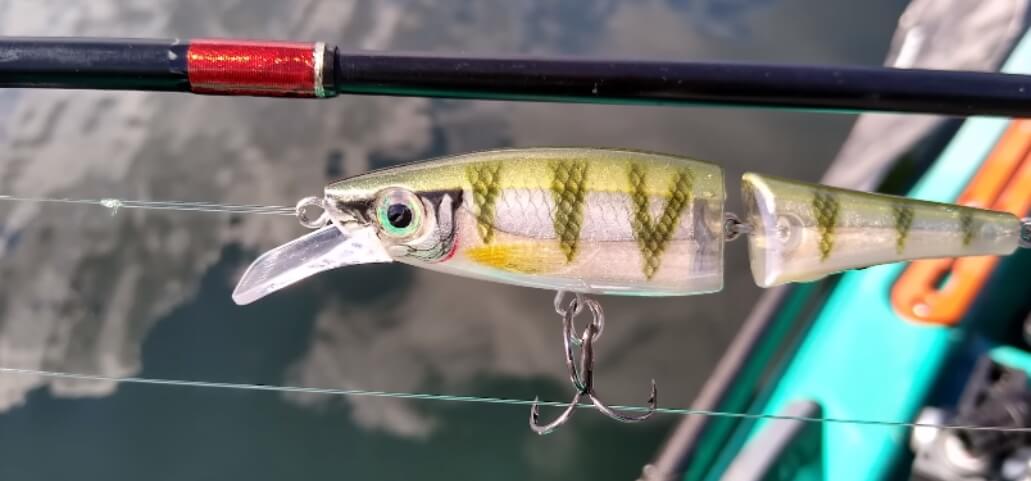Learning how to tie a lure on a fishing line is a critical skill for any angler, beginner or experienced. A well-tied lure increases your chances of catching your ideal catch and guarantees a successful fishing trip. In this comprehensive guide, we’ll walk you through a simple, step-by-step process suitable for beginners, covering various types of lures and lines. By mastering how to tie a lure on a fishing line, You’ll soon gain experience and become a skilled angler.
Understanding the Basics

Prior to delving into the details. of tying a lure to your fishing line, let’s cover some fundamentals. The primary purpose of securely attaching your lure is to ensure that it stays connected to your line throughout your fishing session, increasing your chances of landing a catch. Selecting the appropriate knot is crucial since different knots are more effective with particular kinds of lures and fishing circumstances.
Among the most popular fishing knots are the following:
- Palomar Knot
- Improved Clinch Knot
- Uni Knot
- Snell Knot
Each of these knots has its strengths and weaknesses, and we’ll explore them in more detail later in this guide.
Selecting the Right Line and Lure
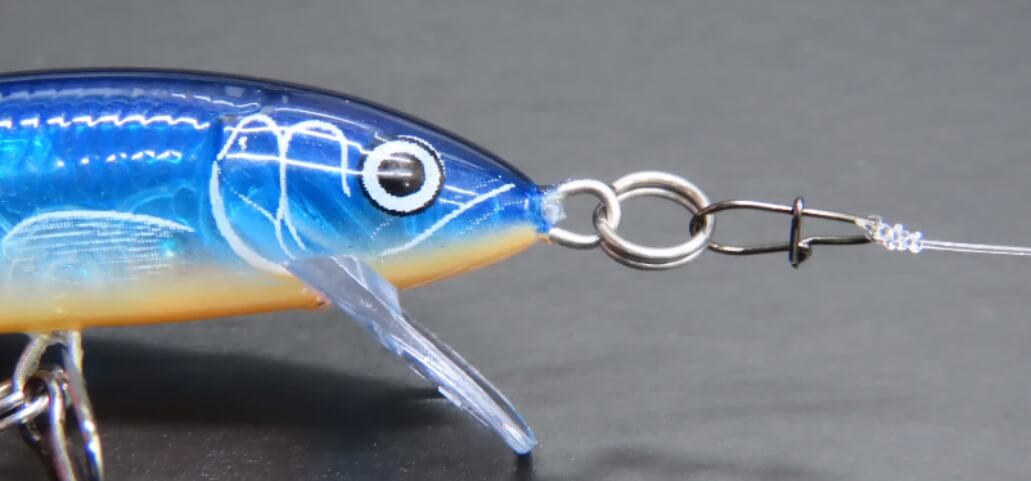
To achieve optimal performance, it’s crucial to choose the appropriate fishing line and lure for your specific situation. When selecting a fishing line, consider factors such as:
- Strength: Ensure the line can withstand the weight of your target fish species.
- Visibility: Choose a line with low visibility in clear water conditions to avoid spooking the fish.
- Stretch: Choose a line with less stretch to improve hook-setting power and sensitivity.
When it comes to choosing the right lure, take into account the following:
- Target species: Choose a bait that closely resembles the fish you’re after natural prey.
- Fishing environment: Consider factors like water depth, clarity, and current when choosing a lure.
- Lure weight: Match the weight of your lure to your fishing line for optimal casting and retrieval.
Step-by-Step Guide How to Tie a Lure on a Fishing Line
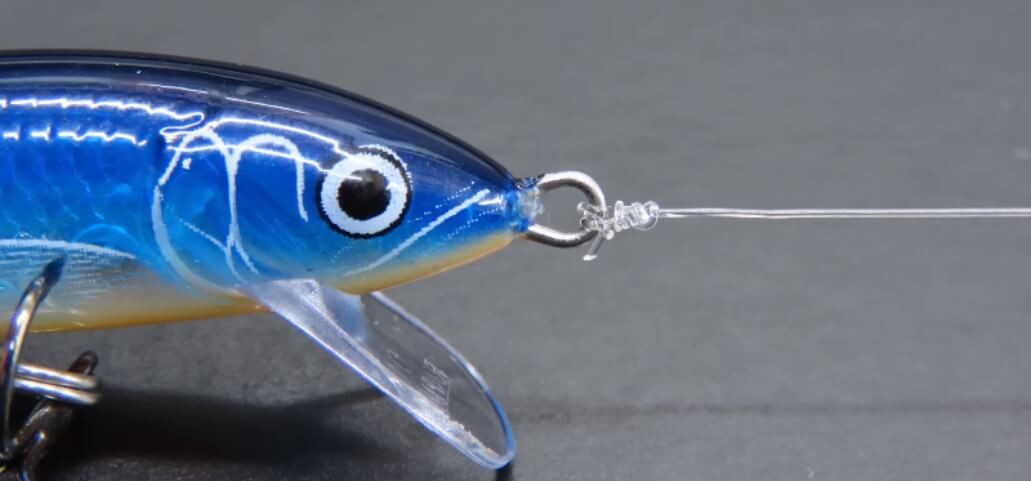
Now that you understand the basics and have selected the appropriate line and lure, let’s dive into the step-by-step process of tying a lure to your fishing line.
Step 1: Palomar Knot
Because it’s easy to tie and strong, anglers often use the Palomar knot. Here’s how to tie it:
- Take around six inches of line, fold it in half, and thread it through the lure’s eye.
- With the doubled line, tie a basic overhand knot, leaving the lure hanging at the bottom.
- Pull on the tag end and the standing line simultaneously to tighten the knot after passing the doubled line loop over the lure.
- Cut off any extra tag end near the knot.
Step 2: Improved Clinch Knot
The Improved Clinch knot is another reliable option for attaching your lure to your fishing line. This is the way you tie it:
- Thread the line through the eye of the lure and double back, creating a loop.
- Turn the tag end five or six times around the standing line.
- Insert the tag end through the little loop that is nearest to the lure’s eye.
- To secure the knot onto the lure’s eye, moisten it and tug on the tag end.
- Cut off any extra tag end near the knot.
Tips for ensuring a secure Improved Clinch knot:
- Moisten the line before tightening to reduce friction and heat buildup.
- Make sure the coils are neatly aligned and not overlapping.
Step 3: Uni Knot
The Uni knot is a versatile choice that works well with various lure types and is relatively easy to tie. Here’s how:
- Make a loop by running the line through the lure’s eye and then doubling back.
- Make 6-8 turns with the tag end around the loop, moving towards the lure.
- Thread the tag end through the little loop that is nearest to the bait.
- To tighten the knot onto the lure, pull the standing line after moistening it.
- Cut off any extra tag end near the knot.
Advantages of the Uni knot:
- Works well with braided and monofilament lines.
- Can be tied in low-light conditions due to its simplicity.
Step 4: Snell Knot
The Snell knot is particularly useful for certain types of lures and hooks, providing a direct line pull for better hook penetration. This is the way you tie it:
- Leaving a long tag end, pass the line through the hook’s eye.
- Double back and create a loop, holding the hook and the standing line in one hand.
- Proceeding towards the hook’s eye, wrap the tag end five times around the hook’s shank and standing line.
- Thread the tag end through the tiny loop that forms between the standing line and the shank.
- To secure the knot onto the hook, moisten it and tug the standing line.
- Cut off any extra tag end near the knot.
When to use a Snell knot:
- When using hooks with a straight eye, like bait hooks or circle hooks.
- When fishing with live or cut bait.
Step 5: Loop Knot (Optional)
Loop knots, such as the Non-Slip Loop knot, can be used to provide extra movement to your lure. Here’s how to tie a Non-Slip Loop knot:
- Divide the line in half, about 8 inches long, then thread it through the lure’s eye.
- With the line that has been doubled, tie an overhand knot making sure the loop is big enough to let the bait through.
- After passing the doubled line through the short loop the overhand knot created, pass the lure through the loop.
- Pulling on the tag end as well as the standing line will help to tighten and moisten the knot.
- Near the knot, trim the extra tag end.
Benefits of using a loop knot:
- Allows the lure to float more freely in the water, imitating natural prey.
- Perfect for lures such as topwater, jerkbait, and crankbaits.
How to Tie a Lure on Braided Fishing Line
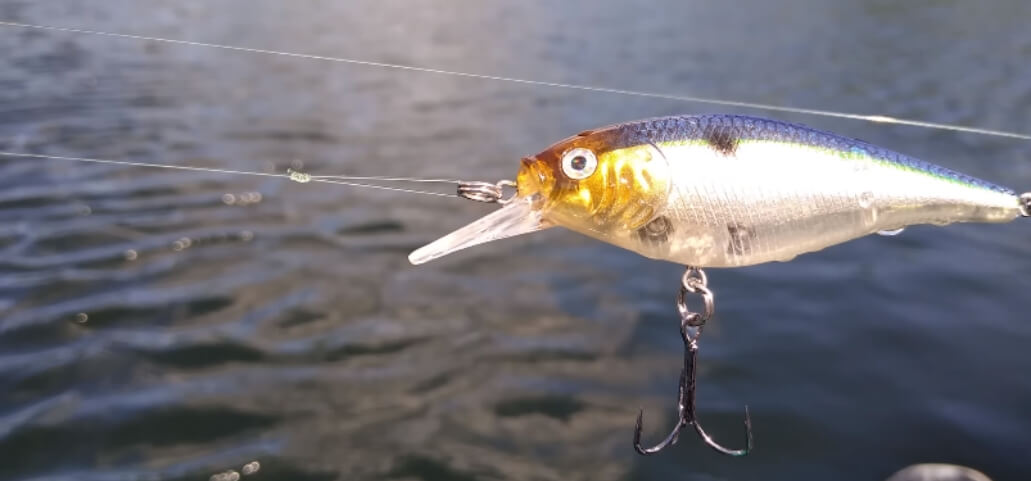
When tying a lure on a braided fishing line, it’s essential to use knots that can handle the line’s slick surface and lack of stretch. The Palomar and Uni knots are both excellent choices for braided lines, as they provide a secure connection and are relatively easy to tie.
Tips for tying knots with braided line:
- Double-check your knots for tightness and security.
- For extra strength, apply a drop of superglue to the knot.
- Consider using a leader material like fluorocarbon to improve abrasion resistance.
How to Tie a Spinnerbait on a Fishing Line
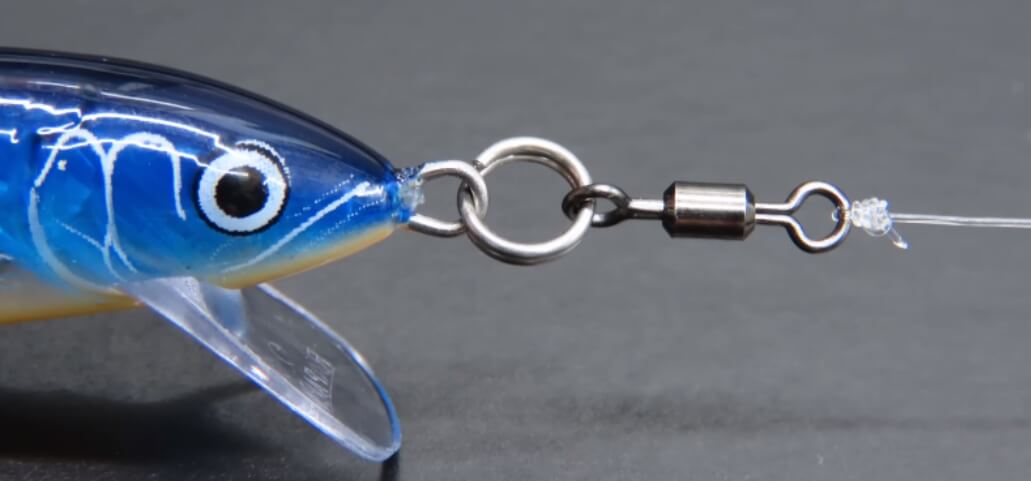
Spinnerbaits are versatile lures that can be tied using the same knots mentioned earlier, such as the Palomar or Improved Clinch knot. However, some anglers prefer using a loop knot to allow for more freedom of movement in the water.
Tips for tying a spinnerbait:
- Ensure the knot is seated securely against the eye of the spinnerbait.
- Check the blade and wire for any damage or bends before tying.
- Try a variety of retrieval speeds and methods to see what works best.
Conclusion
Learning how to tie a lure on a fishing line is an essential skill for any angler, and with practice, it will become second nature. By understanding the basics of knot tying, selecting the right line and lure, and following the step-by-step instructions for various knots, beginners can quickly master the art of securing their lures. To determine which knots are best for you and your fishing technique, don’t be afraid to practice and try a variety of knots. As your skills improve, you can explore more advanced knot tying techniques and take your fishing game to the next level. Remember, a well-tied lure is the foundation of a successful fishing trip.
Frequently Asked Questions
Q1: How to tie a lure on a fishing line for beginners?
Answer: For beginners, it’s best to start with simple knots like the Palomar or Improved Clinch knot. Follow the step-by-step instructions and ensure that the knot is tight and secure before casting your line.
Q2: How do I choose the right knot for my lure?
Answer: The type of lure you are using and the fishing conditions can help determine which knot is best. For example, a Snell knot works well with certain types of hooks and live bait, while a Uni knot is versatile and suitable for various lure types.
Q3: Should I use a loop knot when tying on a lure?
Answer: It’s not necessary to use a loop knot, but some anglers prefer it for certain lures like spinnerbaits or topwater lures. A loop knot allows for more movement of the lure in the water, potentially making it more enticing to fish. Before casting, it is imperative to make sure the knot is firm and tight.
Q4: What is the strongest knot for tying a lure to a fishing line?
Answer: The Palomar knot is widely considered one of the strongest knots for attaching a lure to a fishing line. It is relatively simple to tie and preserves a large portion of the initial strength of the line.
Q5: Can I use the same knots for braided and monofilament lines?
Answer: While some knots, like the Palomar and Uni knots, work well with both braided and monofilament lines, it’s essential to choose knots that are suitable for each type of line. A braided line requires knots that can grip its slick surface, while monofilament knots should account for the line’s stretch.
Disclaimer: This guide aims to educate beginners on tying a lure to a fishing line and is for educational purposes only. Any accidents, injuries, or damages resulting from the use of this information are not the responsibility of the author or publisher. Fishing can be dangerous, so individuals must ensure their own safety and that of others. Always adhere to local fishing rules and use proper safety gear.
Personal Experience: As an experienced angler, I’ve learned the hard way how crucial proper knot tying is. In my early fishing days, I lost many lures and fish due to bad knots. By learning and practicing the knots in this guide, my fishing improved significantly. Now, tying a secure knot is natural for me, allowing me to enjoy fishing and catch more fish. I hope my knowledge and experience can help other anglers, especially beginners, overcome frustrations and gain confidence in their knot-tying skills.
Why Trust Our Content?
Our team of seasoned anglers is dedicated to sharing our knowledge and helping improve your fishing skills. With extensive experience and rigorous testing of fishing techniques and gear, we offer well-researched, easy-to-understand content. Our aim is to provide practical advice for anglers at every skill level, ensuring you receive trustworthy information to enhance your fishing experience.

